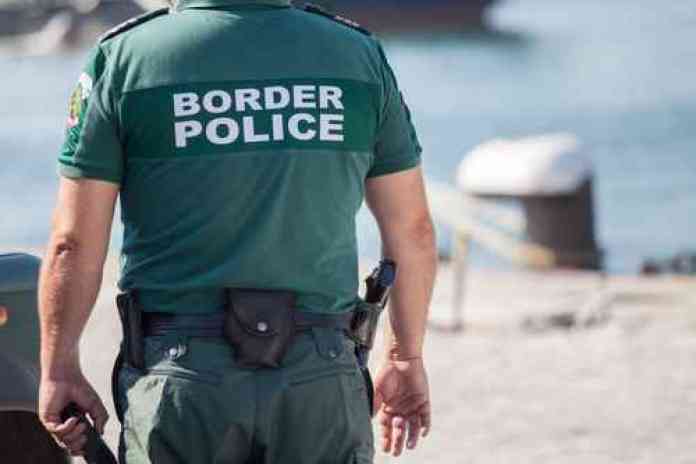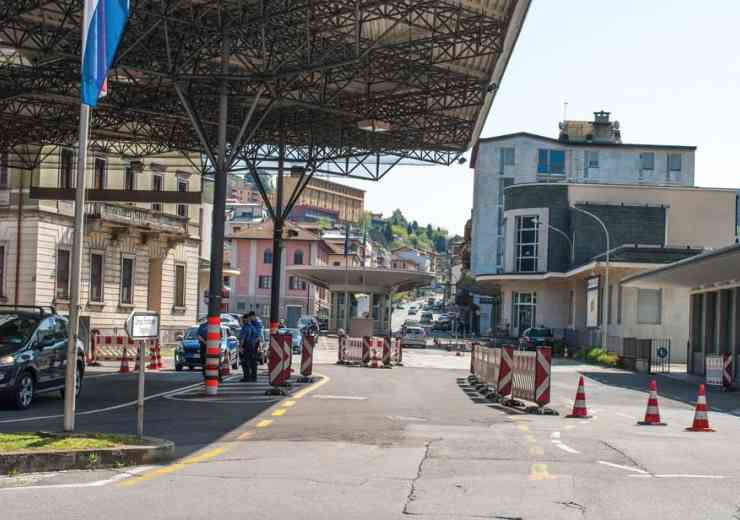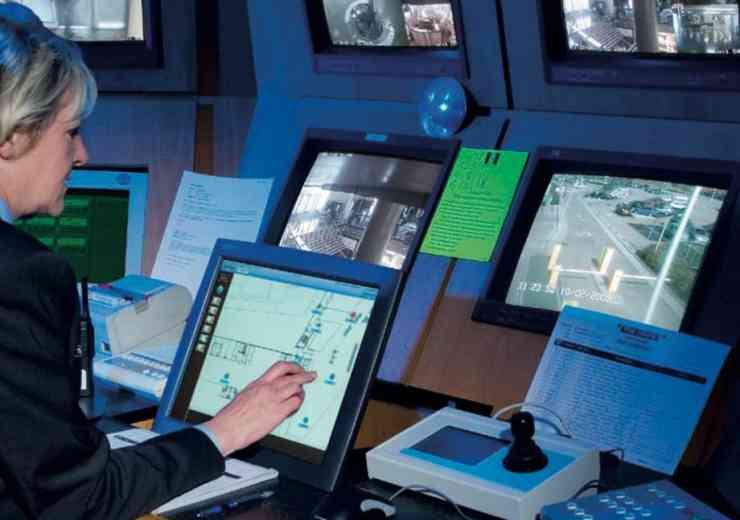
Securing UK borders from terrorist threats
Whether Brexiteer or remainer, the UK’s decision to leave the European Union in June 2016 will have a major impact on the way the country deals with and handles migration. In the first of its monthly reports for the Security & Counter Terror Expo, Counter Terror Business looks at how border security will help ease the migration flow to the UK and keep terrorism at bay
The topic of border security has been a prominent theme in the discussions of government over the last few years. Magnified by both European migration concerns and the close proximity of terrorist attacks across the English Channel, the public opinion on the nation’s safety has ensured that Prime Minister Theresa May, in her first year as premier, will need to settle the problem with more speed and certainty than her predecessor. Moreover, the weight that border security carried in the European Union referendum campaign once again served to show public discontent and discomfort with the perceived vulnerability of our shores.
Border security is crucial to the level of national security that the UK enjoys. Protecting our borders from the illegal movement of weapons, contraband and people is essential to UK safety. As an island nation, the UK is somewhat separated from the threat that countries such as France, Germany and Belgium face. For example, the November 2015 terrorist attacks in Paris and Saint-Denis, which left a death toll of 130 civilians, highlights the difficulty that mainland European countries face in monitoring terrorist activity. With Islamic State claiming responsibility for the attacks, in retaliation to French airstrikes in Syria and Iraq, the investigation following the acts showed that the terrorists planned the attack in Syria, but organised the details in Belgium. It is believed that a number of those responsible had entered Europe among a growing flow of migrants and refugees. But there is another issue to contend with, which is that of homegrown terrorism.
From homegrown to Syria
Many of the Islamic State terrorists involved in the Paris and Brussels attacks were what are considered homegrown terrorists. As of January 2015, an estimated 440 Belgians had left the country for Syria and Iraq, creating the impression of the nation as a hub of terrorist activity and jihadist recruitment. Molenbeek, a municipality surrounding Brussels, was described by one Belgian authority as ‘a breeding ground for violence’. Salah Abdeslam was one of the terrorists accused of involvement in the attacks in Paris on 13 November 2015, and was the centre of Europe’s largest manhunt following the attacks. The profile of Abdeslam emphasises the risk that border control authorities in Europe face. Prior to the Paris attacks, Abdeslam is understood to have freely travelled to six counties in an effort to transport individuals, who would later be involved in the attacks, into Europe.
Within our own borders, British authorities suggest that approximately 850 people from the UK have travelled to support or fight for jihadist organisations in Syria and Iraq, with about half having since returned to the UK. Most people can remember when Bethnal Green Academy found itself in the spotlight in early 2015, when three of its students, Shamima Begum, Amira Abase and Kadiza Sultana, flew from London to Turkey, before travelling to Syria to join Islamic State. The girls were aged 15 and 16 at the time, and put a firm spotlight on how easily they managed to leave the UK unquestioned and unresisted, despite evidence showing that UK authorities were aware that Shamima was in contact with Aqsa Mahmood, who left Glasgow for Syria in 2013 to marry an Islamic State fighter, before travelling.
The perception of border security as an essential force to prevent terrorists entering the country is unfairly weighted, as preventing those susceptible to radicalisation from leaving is equally important. The Prevent stream of the UK counter terrorism strategy CONTEST aims to stop people becoming attracted to terrorism domestically and suffocate communications and support from overseas. Individuals suspected of posing a terrorism-related threat may be prevented from travelling from the UK under powers in the Counter Terrorism and Security Act of 2015. This is maintained by carrying ‘no fly’ schemes to cover individuals who pose a terrorist or terrorism-related threat and are seeking to leave the UK. But what about those seeking to come to the UK?
Mass migration
The European migrant crisis hit its peak in 2015, when five boats carrying almost 2,000 individuals to the continent sank in the Mediterranean Sea, killing over 1,200 people. Aside from that April event, figures show that the migrants primarily arrived from Syria, Afghanistan and Iraq. The extent of migration led to increased funding for Mediterranean border control, the creation of Operation Sophia, a military operation with the aim of neutralising established refugee smuggling routes in the Mediterranean, and even the reintroduction of border controls within the Schengen Area.
According to a survey commissioned by the Pew Research Center, the majority of Europeans believe the influx of refugees across the continent had led, and will lead, to an increase in the likelihood of terrorism. Those surveyed in Hungary (76 per cent) and Poland (71 per cent) were the top nations that expressed concerns that refugees will increase the likelihood of terrorism in their country.
Hungary, in fact, claim that seven of the attackers from the 2015 Paris attacks slipped through Hungarian borders while posing as migrants, despite having their names registered in counter terrorism databases across Europe. Abdeslam is believed to have made four trips to Hungary in August and October 2015 in which he picked up other terrorists linked to both the Brussels and Paris attacks.
Mujtaba Rahman of the Eurasia Group, a political risk and consulting company, said of the issue: “There is a growing perception among European public opinion that E.U. leaders are not in control of the Continent’s terrorist threat. Combined, these attacks [in Brussels] will increase xenophobic and anti-immigration sentiment across the E.U., which has already been rising in light of the E.U.’s ongoing refugee crisis.”
This opinion was evident in the popularity drop of Angela Merkel who opened the country’s borders to more than one million migrants last year. It has been further inflated by the rhetoric used by U.S President elect Donald Trump, who frequently associated terrorism with immigrants, particularly Muslims, and threatened to build a wall between the United States and Mexico.
Weapon carrying
In October 2016, Lord Toby Harris of Haringey launched his independent report into the steps that should be taken to improve London’s resources and readiness to respond to a major terrorist incident. Following the scale of large terrorist attacks in Paris, Brussels and during the Bastille Day celebrations in Nice, Lord Harris’ review made 127 recommendations or the Mayor of London, the government and other agencies to consider.
Among the recommendations were a number of border control suggestions, including for security measures on the river Thames to be strengthened and for the Metropolitan Police to further explore the use of temporary barriers to protect against a Nice style attack in London.
Lord Toby Harris said: “A serious terrorist attack remains highly possible and we cannot be complacent. London needs to become a city where security and resilience is designed in and is part of the city’s fabric, and where everyone who lives and works here sees security and resilience as their responsibility just as much as it is for the emergency services and civic authorities.”
Lord Harris’ report suggested that the most significant terrorist threat affecting the UK was a marauding terrorist firearms attack (MTFA), such as that seen in Mumbai in 2008, Nairobi in 2013, Paris in 2015 and Orlando in 2016. This form of attack would likely involve shootings, fires, explosives and possible hostage takings. As seen in Paris, this form of attack can be carried out by a small number of attackers, perhaps working individually, which means that multiple, simultaneous attacks are a possibility - stretching response teams and emergency services and increasing the likelihood of casualties.
All of this beggars the question - how are terrorists equipping themselves with the firearms necessary for such an attack. The National Crime Agency (NCA) warned this month that half of the terror plots prevented in the UK over the last two years involved extremists attempting to purchase guns from criminal gangs. Of the estimated 6,000 organised criminal groups in the UK, 750 have access to guns, or are trying to access them.
Lynne Owens, chief of the NCA, warned: “Criminal networks, who think nothing about who they sell firearms to, present a significant route by which extremist groups will try to access the sort of weapons used in recent attacks in Europe."
Mark Rowley, assistant commissioner for Specialist Operations in the Metropolitan Police Service, added that the Met is also concerned by an apparent upsurge in guns on the streets in London and some other big urban areas, with law enforcement officers seizing at least 884 firearms last year, including Czech-made Skorpion submachine pistols, Uzis, and Mac-10 weapons.
Lord Harris suggests that weaknesses in Britain’s border security could possibly be allowing terrorists to get the guns they need to attack London. The report highlights that, given the current specific threat relating to MTFA or similar terrorist attacks, ‘much more should be done to strengthen the ability to prevent the importation of firearms’. It recommends that the Mayor of London should seek ‘assurances that the routine screening and searching of cars and freight entering the country is being significantly enhanced’. It continued that ‘the aerial surveillance capacity available to the Border Force, the NCA and the police enabling them to monitor and control the border needs to be enhanced given that existing capacity is already fully utilised’.
The Brexit impact
Having seen the UK public vote in favour of exiting the European Union, by 52 per cent to 48, Prime Minister Theresa May knows that a lot of pressure rests on returning full border controls. The media build up to the referendum was overwhelmed with stories detailing the flood of refugees entering Europe from Syria, Africa and elsewhere in the Middle East. It has been reported that since 2012, the UK ha received an average of 300,000 immigrants annually, with half of the immigrants in 2015 arriving from non-EU nations.
A large portion of the Leave campaign rhetoric focused upon regaining control of the immigration flow. But the post-Brexit landscape makes for complicated border control. Northern Ireland would essentially form the UK’s only land border since Ireland proper is an EU member. Historically contentious, the Irish border extends over 300 highly porous miles. The common travel area (CTA), agreed between the three administrations of London, Belfast and Dublin, has existed since the 1920s. With may critics viewing this as a potential backdoor for immigration, Secretary of State for Northern Ireland James Brokenshire has claimed that entry points to the Irish Republic will become a new front line for combating illegal immigration once the UK withdraws from the EU.
Then there is the complicated possibility of establishing border controls on the England-Scotland border. Despite voting in their 2015 referendum to remain part of the UK, First Minister Nicola Sturgeon has published a draft bill giving Scotland the ability to reconsider the question of independence before the UK leaves the EU. If the value of remaining part of the EU outweighs the value of remaining part of the UK, not only would more land border controls need to be established between England and Scotland, but maritime border protections would have to change at ports of entry to process EU-origin vessels in addition to other foreign vessels, as well as EU passengers arriving on ferries from Ireland and France.
How technology can help secure Britain’s borders
Following concerns being raised about gaps in British border security and the rise in the number of guns found on the streets in many major cities, Neil Basu, the new national co-ordinator for counter terrorism policing, has said that an increase in biometric scans and tamperproof passports would do more to protect the border.
In an interview with the Press Association, Basu said: "Just in the same way you can smuggle illegal firearms into a country, you can smuggle people into a country. And if one of those happens to be a terrorist, that's a big problem. Society needs to debate what's required. But in law enforcement, I'd say if you want security, you need to improve your biometrics at the borders.
"Everybody's identity should be checked as they come through a border in a way that is foolproof. Fingerprints, iris scans, the documents need to be tamper-proof. What we need is a debate about what border security really means."
Moreover, a briefing paper entitled The border after Brexit: How technology can help secure Britain’s borders, published by the Adam Smith Institute, looks at why, in light of Brexit, it will become even more important for Britain’s borders to be secure. The authors of the report, Sam Bowman and Ed West, argue that, at present, Britain’s Border Force is not equipped to quickly, accurately and securely monitor passengers in and out of Britain, claiming that the Border Force Warning Index and Semaphore systems are outdated. With 7.5 per cent of high risk flights not being scanned appropriately, this has consequently allowed known terrorists to leave the country without being detained properly.
Post-Brexit Britain will undeniably take a new form to that which it has held for a number of decades. As relationships within the European Union and between European countries begin to stretch under political tension, the landscape of border security will become more scrutinised than ever before. The full extent to which Theresa May will change our border control is yet to be revealed, but is is likely that its tightening will please the British public. With new lines being drawn within the EU, it is an opportunity to strengthen our border control - both of people coming in and out, and weapons.
This article first appeared in submission to Security and Counter Terror Expo as part of Counter Terror Business’ monthly market reports. As media partner to the event, Counter Terror Business will be providing six reports covering the show’s six security capabilities in detail: border security; policing and law enforcement; major events; cyber security; critical national infrastructure; and security services.












